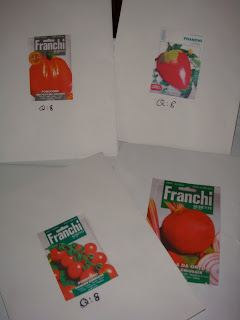Oil
gushing into our precious Gulf of Mexico and beyond will likely affect our planet's ecosystem in catastrophic ways we haven't even imagined.
There are less damaging ways to be reminded of the interconnectedness of our world, though, like last weekend, when I went to the roof to get greens for a mother's day salad and found bird droppings on the bok choy. For the first time in three years of rooftop growing I had to wash what I picked.
And then I realized: we'd changed the roof's ecology significantly by introducing two beehives. Soon I saw this bird on the bee-cam--the video feed Art set up so we could view the goings on at Hive 1 and the new hive, where the Italian bees hang out.
Who was this bird with yellow breast and
what looked like raspberry sauce poured on its head?

It was snapping bees out of mid-air and also poking its head into the hive entryway--bold, in my view.
I googled the Audubon Society and was surprised to find they have a
bird ID email all set up. Within a day I had my answer from David Catlin, Senior Director of Field Support at national HQ in Springfield, MO:
It's a partially-molted male tanager, most likely a Scarlet Tanager, given that the photo was taken in Chicago. First-year birds come into their breeding plumage late--which is why this one is still partly yellow-green.The fact that these beauties (seen
here in their ultimate plumage) eat bees explained the bird droppings all around both hives and on a few of our leafy greens. A few days later, I captured this shot off the monitor...
Another scarlet tanager,
a little further along in his molt?

We can never un-hitch one part of nature from another, so with bees we get birds and the products of their digestive tracts.
Occasionally I yearn for the days of growing food in living soil in a sunny garden. Our tiny in-ground plot gets six inches of compost every spring and fall, has a gorgeous texture, gets very partial sun, and is loaded with beneficial microorganisms.
It's also loaded with hungry critters
that turn the greens planted there into swiss cheese.

Again, there's no disconnecting the components of the natural world.
We've been eating the rooftop greens for weeks, a salad a day. Most are as clean as you'd get out of a salad spinner. They've been largely untouched by pests up there.
If you read us regularly,
you know we love our greens.

That's why we moved to the roof...so we could capture the 10 hours of sun needed to grow. With neighbor Bruce, we started vegetables from seed so we could experience the grand diversity of nature's offerings, not just what the big-box store had to offer.
Which makes
his report yesterday all the more discouraging, especially given his extraordinary care and tending of the seedlings. Thanks to a few solid local resources, we're re-building our heirloom tomato stash and recovering our optimism.
Nature's tenacious resiliency is inspiration for those of us who grow. But can she process the gallons of poison BP continues to inject? How long before we understand we need to stop drilling altogether?
Which of the
four futures will we choose?





























